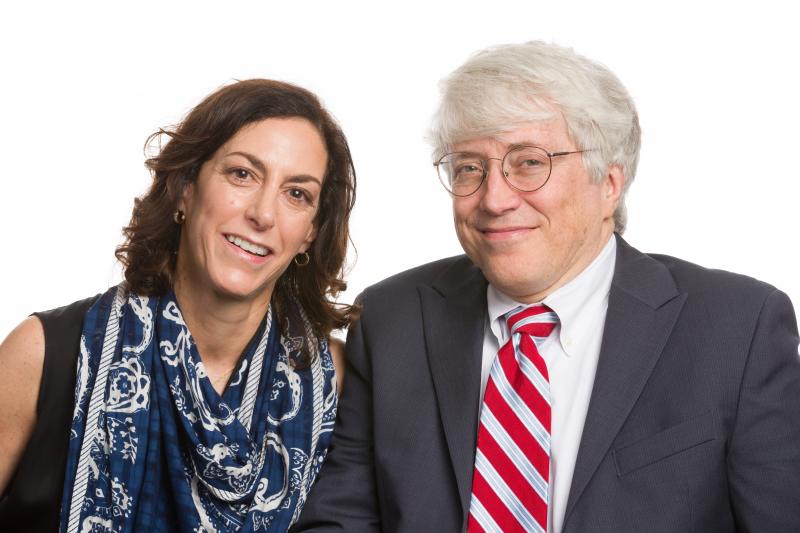
PISCATAWAY, N.J. – The overall voter turnout rate for people with disabilities was about 6 percentage points lower than the rest of the population in the November 2016 elections, but the turnout rate for employed people with and without disabilities was virtually identical, according to a report released today by the Rutgers School of Management and Labor Relations.
Among eligible voters, overall reported turnout was 55.9 percent for people with disabilities and 62.2 percent for people without disabilities – a gap of 6.3 points. However, among eligible voters with a job, turnout was 64.7 percent for people with disabilities and 63.6 percent for people without disabilities. Click here for the full report, including a state-by-state breakdown.
“There was no gap in voter turnout between employed people with and without disabilities, indicating that employment helps provide resources and social contact that encourage voting,” said Professor Lisa Schur, who co-authored the report. “Employment helps bring people with disabilities into mainstream political life.”
The researchers calculated turnout by analyzing data from the U.S. Census Bureau’s Current Population Survey Voting Supplement, which uses six questions to determine whether a person has a disability. Reported turnout varied by disability type:
- Hearing Impairment: 62.7 percent turnout
- Difficulty Walking or Climbing Stairs: 55.9 percent turnout
- Visual Impairment: 53.7 percent turnout
- Difficulty Going Outside Alone: 44.7 percent turnout
- Difficulty Dressing or Bathing: 44.6 percent turnout
- Mental or Cognitive Impairment: 43.5 percent turnout
With an aging population and medical advances that enable people to live longer, the number of voters with disabilities has steadily increased from 14.7 million in the November 2008 elections, to 15.6 million in 2012, to 16 million in 2016. However, the “disability gap” persisted across all three elections: 7.2 percentage points in 2008, 5.7 points in 2012, and 6.3 points in 2016.
“These figures show the continued difficulties people with disabilities face in exercising the right to vote,” said Distinguished Professor Douglas Kruse, who co-authored the report. “Standard turnout predictors such as education and income do not fully account for the disability gap. It’s also due to many people with disabilities being socially isolated and perceiving that public officials are less responsive to their needs."
The report, issued during National Disability Voter Registration Week, finds 68.3 percent of people with disabilities and 70.6 percent of people without disabilities were registered to vote in November – a gap of 2.3 percentage points. Among those registered to vote, 82 percent of people with disabilities and 88 percent of people without disabilities ended up casting a ballot – a gap of 6 points.
The Rutgers analysis of U.S. Census Bureau surveys also finds:
- A lack of interest in the election or politics was the most commonly cited reason for not registering to vote. This was true of both people with disabilities (36.1 percent) and people without disabilities (45.3 percent).
- Among those who were registered but did not vote, 20.6 percent of people with disabilities and 26.5 percent of people without disabilities said they did not like the candidates or campaign issues in 2016 – up from 9.7 percent and 13.8 percent, respectively, in 2012.
- Transportation problems kept 6.8 percent of registered voters with disabilities from casting a ballot in 2016, compared to 1.8 percent of people without disabilities.
Polling place accessibility is always a key concern, as research has shown that a majority of people with disabilities prefer voting in person to voting by mail. While 2016 data are not yet available, an earlier study by Professor Schur found that 30 percent of people with disabilities had problems voting at polling places in 2012, compared to 8 percent of people without disabilities.
“Public officials should continually take steps to ensure polling place accessibility and encourage people with disabilities to register and exercise their right to vote,” Schur said. “If people with disabilities voted at the same rate as the rest of the population, we project there would be an additional 2.2 million voters in the U.S. That’s enough to have a significant impact on elections at every level of government.”
Press Contact
Steve Flamisch, Rutgers School of Management and Labor Relations
848.252.9011 (cell), steve.flamisch@smlr.rutgers.edu
About Us
Rutgers School of Management and Labor Relations is the world’s leading source of expertise on managing and representing workers, designing effective organizations, and building strong employment relationships.
###


